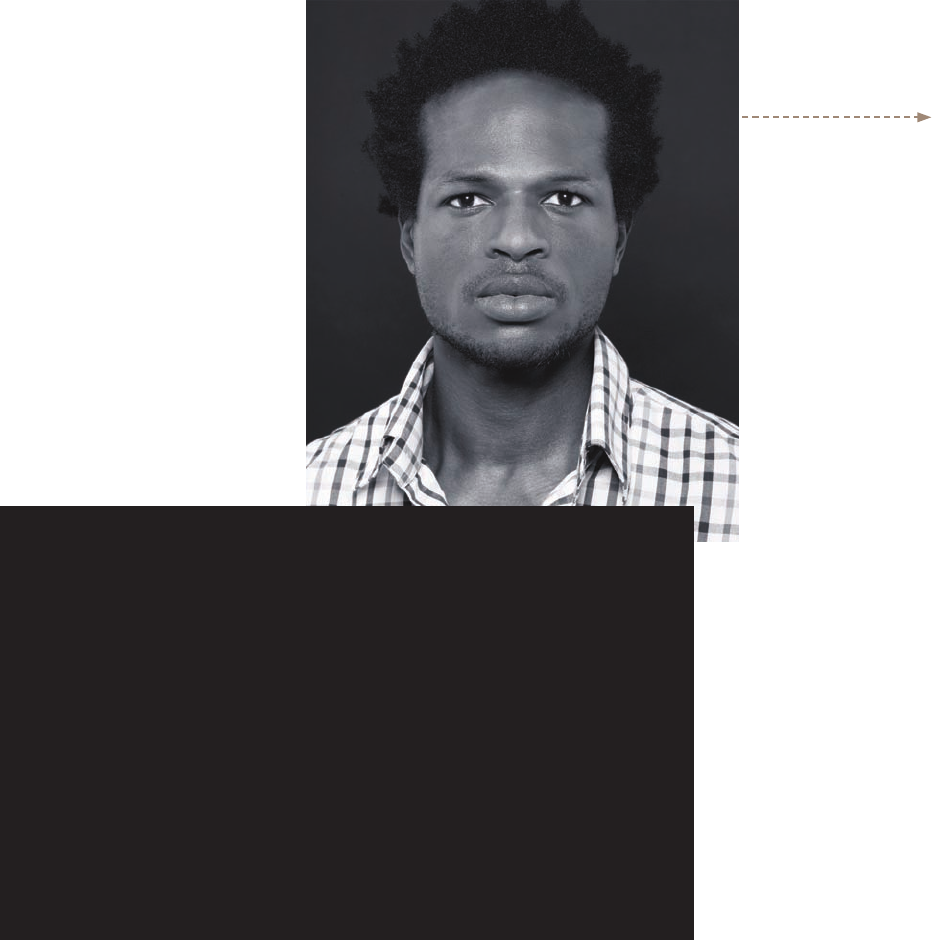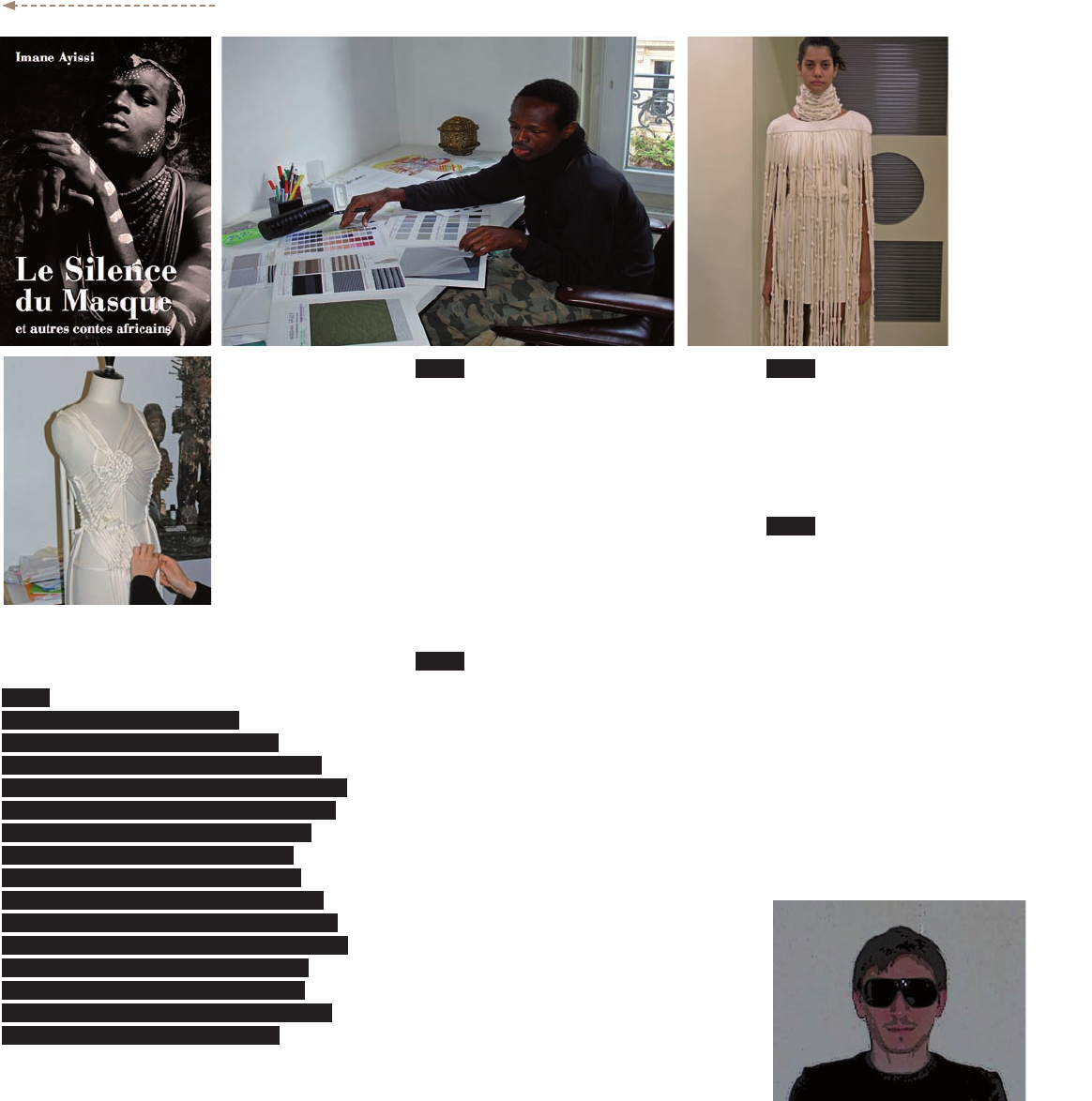
Imane Ayissi 125
036
TFD_libro.indb 125
26/11/09 15:47:10
Hailing from Cameroun,
the son of a family of
artists and sportsmen:
his father was a
champion boxer, his
mother had been elected
Miss Cameroun in 1960,
and his brothers and
sisters are dancers and
singers. He worked as
a model, presenting
men’s collections and
brands such as Cardin,
Dior, Lanvin, Givenchy,
Yves Saint Laurent,
and Valentino. The
garments of Imane
Ayissi’s couture and
prêt-à-porter lines
meld African traditions
with western fashion.
His collections, often
featuring exotic,
evocative names,
combine craftsmanship,
materials, and
traditional African cuts.
Together with his use of
innovative fabrics there
is also often an infusion
of typically African-
style DIY or recycling
work, references to
Parisian haute couture,
and contemporary
creativity to create a
fashion targeted at an
international public.
Imane Ayissi
www.imaneayissi.com
© Alex Fadel
TFD_libro.indb 125 26/11/09 11:38:55

TFD_libro.indb 126 26/11/09 15:47:11
© Marc Robin
352 INSPIRATION. Everything
can inspire me to start a collection:
object, picture, materials, words, story,
construction principle, smell, etc. Then
I put words on this inspiration and it
becomes the real theme of the collection.
For example, my summer 2007 collection
“Le Printemps de Satan” came from my
desire of mixing gothic with romantic. All
the challenge is then translating this theme
in outlines, garments, details, and more in
an intelligent way.
353 M
ATERIALS. Actually I can use
every kind of fabric, but because I am
more interested in the construction and
the architecture of the garments, I use
more plain fabrics. I choose them for
their qualities ( uidity, density, weight,
softness, etc.) which must correspond to
the outlines of the nal garment I want.
I can even use very basic fabrics, like
cotton jersey, and “re-build” them into a
sophisticated material. For example, for
my 09/10 winter collection “Voodoo Mood,”
I created dresses made entirely out of
tied ribbons, cut in a very simple bamboo
jersey. I am more and more involved in
earth protection, so I look more and more
for organic fabrics, but it’s still very hard
to nd organic fabrics that are a little bit
sophisticated.
354 YOUR RIGHT ARM? My business
partner and friend Jean-Marc Chauve, who
is also designer, art advisor, and consultant
at the Institut Français de la Mode (IFM),
the prestigious French fashion school and
research center.
355 I
NDIVIDUALITY VS. GROUP BELONGING.
I didn’t study in any fashion school and
while I come from a continent (Africa)
with clothes, jewelry, and other nery
traditions, it lacks a fashion tradition.
Fashion is a western invention and so I
had to choose my in uences and references
by myself. Therefore I think I’m more
on the individual side, and maybe my
best creations are interesting because it’s
hard to characterize them (Is it African?
European? Haute couture? Avant-garde?)
But of course, as every designer, I’m
in uenced by several creative works, from
several creative areas: fashion design,
architecture, plastic arts, music.
351
T
RADITIONAL MANUFACTURING VS.
EXPERIMENTATION. In my opinion, the
de nition of fashion is experimentation and
innovation, so I always try to create something
new, even surprising at times. But innovation
should also be based on tradition, whether
a little bit or a lot. Thinking of creating
something from nothing is an illusion. In
the high-fashion range, a collection is a very
accurate exercise: for each collection you have
to create garments representative of your style,
garments representatives of the collection
theme, spectacular out ts for press, more
simple and affordable out ts for clients…and
all these items must be very coherent.
© Raffaele Soccio and Luca Sorrentino for Alta Roma
126 1,000 Ideas by 100 Fashion Designers
TFD_libro.indb 126
26/11/09 11:38:56
Get 1000 Ideas by 100 Fashion Designers now with the O’Reilly learning platform.
O’Reilly members experience books, live events, courses curated by job role, and more from O’Reilly and nearly 200 top publishers.

